Development of an In Vitro Model for Inflammation Mediated Renal Toxicity Using 3D Renal Tubules and Co-Cultured Human Immune Cells
- PMID: 37843784
- PMCID: PMC10645777
- DOI: 10.1007/s13770-023-00602-4
Development of an In Vitro Model for Inflammation Mediated Renal Toxicity Using 3D Renal Tubules and Co-Cultured Human Immune Cells
Abstract
Background: The emergence of various infectious diseases and the toxic effects of hyperinflammation by biotherapeutics have highlighted the need for in vitro preclinical models mimicking the human immune system. In vitro models studying the relationship between hyperinflammation and acute renal injury mainly rely on 2D culture systems, which have shown limitations in recapitulating kidney function. Herein, we developed an in vitro kidney toxicity model by co-culturing 3D engineered kidney proximal tubules cells (RPTEC/TERT1) with human peripheral blood mononuclear cells (PBMC).
Methods: RPTEC/TERT1 were sandwich cultured to form 3D renal tubules for 16 days. The tubules were then co-cultured with PBMC using transwell (0.4 μm pores) for 24 h. Hyperinflammation of PBMC was induced during co-culture using polyinosinic-polycytidylic acid (polyI:C) and lipopolysaccharide (LPS) to investigate the effects of the induced hyperinflammation on the renal tubules.
Results: Encapsulated RPTEC/TERT1 cells in Matrigel exhibited elevated renal function markers compared to 2D culture. The coexistence of PBMC and polyI:C induced a strong inflammatory response in the kidney cells. This hyperinflammation significantly reduced primary cilia formation and upregulated kidney injury markers along the 3D tubules. Similarly, treating co-cultured PBMC with LPS to induce hyperinflammation resulted in comparable inflammatory responses and potential kidney injury.
Conclusion: The model demonstrated similar changes in kidney injury markers following polyI:C and LPS treatment, indicating its suitability for detecting immune-associated kidney damage resulting from infections and biopharmaceutical applications.
Keywords: 3D renal proximal tubule; Hyperinflammation; In vitro renal toxicity model; Peripheral blood mononuclear cells.
© 2023. Korean Tissue Engineering and Regenerative Medicine Society.
Conflict of interest statement
There are no conflicts to declare.
Figures
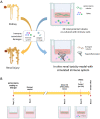
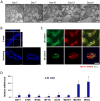
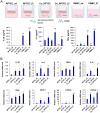

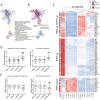

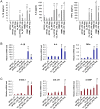
Similar articles
-
RPTEC/TERT1 cells form highly differentiated tubules when cultured in a 3D matrix.ALTEX. 2018;35(2):223-234. doi: 10.14573/altex.1710181. Epub 2017 Dec 2. ALTEX. 2018. PMID: 29197217
-
Human renal tubular cells contain CD24/CD133 progenitor cell populations: Implications for tubular regeneration after toxicant induced damage using cadmium as a model.Toxicol Appl Pharmacol. 2017 Sep 15;331:116-129. doi: 10.1016/j.taap.2017.05.038. Epub 2017 Jun 3. Toxicol Appl Pharmacol. 2017. PMID: 28587817 Free PMC article.
-
Physiological oxygen and co-culture with human fibroblasts facilitate in vivo-like properties in human renal proximal tubular epithelial cells.Chem Biol Interact. 2022 Jul 1;361:109959. doi: 10.1016/j.cbi.2022.109959. Epub 2022 May 7. Chem Biol Interact. 2022. PMID: 35533734
-
The RPTEC/TERT1 Cell Line as an Improved Tool for In Vitro Nephrotoxicity Assessments.Biol Trace Elem Res. 2015 Jul;166(1):66-71. doi: 10.1007/s12011-015-0339-y. Epub 2015 Apr 19. Biol Trace Elem Res. 2015. PMID: 25893367 Free PMC article. Review.
-
Dietary glycation compounds - implications for human health.Crit Rev Toxicol. 2024 Sep;54(8):485-617. doi: 10.1080/10408444.2024.2362985. Epub 2024 Aug 16. Crit Rev Toxicol. 2024. PMID: 39150724
Cited by
-
Oxygenating respiratoid biosystem for therapeutic cell transplantation.Nat Commun. 2024 Oct 23;15(1):9151. doi: 10.1038/s41467-024-53246-w. Nat Commun. 2024. PMID: 39443443 Free PMC article.
References
-
- Andrade EL, Bento AF, Cavalli J, Oliveira SK, Freitas CS, Marcon R, Calixto JB. Non-clinical studies required for new drug development-Part I: early in silico and in vitro studies, new target discovery and validation, proof of principles and robustness of animal studies. Braz J Med Biol Res. 2016;49:e5644. doi: 10.1590/1414-431x20165644. - DOI - PMC - PubMed
-
- Irvine AR, van Berlo D, Shekhani R, Masereeuw R. A systematic review of in vitro models of drug-induced kidney injury. Curr Opin Toxicol. 2021;27:18–26. doi: 10.1016/j.cotox.2021.06.001. - DOI
MeSH terms
Substances
Grants and funding
LinkOut - more resources
Full Text Sources
